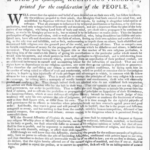Religion
Although Mikveh Israel, Philadelphia’s first synagogue, was not founded until 1782, the land for its cemetery has an earlier history. A burial plot was first bought by Nathan Levy in 1738 when he suddenly needed a burial place for one of his children, and land was made available to him by Thomas Penn, the son…
Read MoreJacob Rader Marcus, the founder of the American Jewish Archives (AJA), was born in Connelsville, PA on March 5, 1896. Known as the “Dean” of American Jewish historians, Dr. Marcus was the first American born, scientifically trained historian to earn an academic Ph.D. to examine the American Jewish experience. In 1947—with the great centers of…
Read MoreRabbi Isaac Mayer Wise, the founder of the Hebrew Union College and the Central Conference of American Rabbis (CCAR), was born in Steingrub, Bohemia on March 20, 1819. Isaac Mayer Wise received a traditional Jewish education. He came to America in 1846 and soon began serving as rabbi at Congregation Beth El in Albany, New…
Read MoreTwo 19th-century ketubot. The first is from 1857 and is for the marriage of Solomon Joseph and Rebecca Abraham, both of Charleston, S.C. The other is from 1873 and is for the marriage of David Nieto and Esther Belasco—residents of Kingston, Jamaica.
Read MoreAfter his ordination at HUC in 1902, Julian Morgenstern studied in Europe and received his doctorate from the University of Heidelberg. He served several small congregations in the Midwest, and then returned to HUC in 1907, the first American-born scholar to be appointed to the HUC faculty. On January 29, 1921, a minority of the…
Read MoreAlfred Gottschalk was born in Oberwesel, Germany on March 7, 1930. His father fled to New York in 1938 after narrowly escaping arrest by the Gestapo. Alfred and his mother joined him in 1939. After graduating from Brooklyn College, Gottschalk attended HUC-JIR (first in New York and then in Cincinnati), where he received his rabbinical…
Read MoreDecember 2nd, 1763, Members of the Jewish community of Newport, Rhode Island witnessed the dedication of the Touro Synagogue, the oldest standing synagogue building in the United States. It is the only synagogue to survive from the colonial era. The synagogue was designed by Newport citizen Peter Harrison. At the onset of the American Revolution,…
Read More









